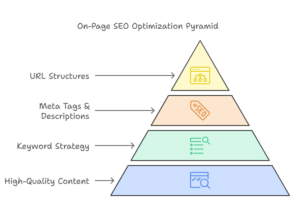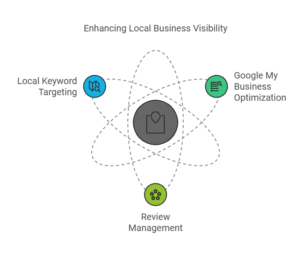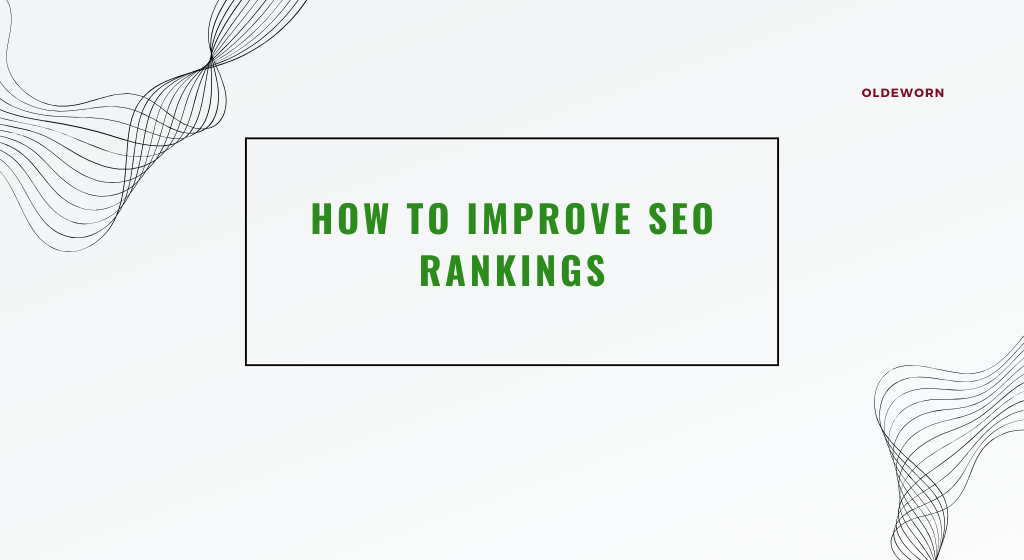Introduction to SEO and Its Importance
SEO, or Search Engine Optimization, is the lifeblood of online visibility. Whether you’re a small business owner, a blogger, or running a global brand, SEO determines how easily your audience can find you online. Imagine opening a store in a bustling city but hiding it in an alley with no signboards. Without SEO, your website faces a similar fate. The good news? Boosting your SEO rankings isn’t rocket science—it’s about consistency, strategy, and staying updated with the latest practices.
Understanding the Basics of SEO
What is SEO?
SEO stands for Search Engine Optimization. It’s a set of practices aimed at improving your website’s visibility in search engine results pages (SERPs). When someone types a query relevant to your business, good SEO ensures you show up among the top results.
Why is SEO Critical for Online Success?
More than 90% of online experiences start with a search engine, making SEO crucial for driving organic traffic. It’s cost-effective compared to paid ads and builds trust with your audience. A higher ranking in SERPs equals better credibility and more clicks.
Key Components of SEO
- On-Page SEO: Optimizing individual pages for keywords and user experience.
- Off-Page SEO: Building backlinks and improving site authority.
- Technical SEO: Ensuring your website is crawlable, secure, and fast.
Optimizing On-Page SEO
Crafting High-Quality Content
Content is king in the SEO realm. High-quality, engaging content that addresses users’ questions is the foundation of a successful strategy.
- Focus on creating long-form, detailed articles.
- Use bullet points and subheadings for readability.
- Ensure your content is unique, offering insights that competitors lack.
Strategic Use of Keywords
Keywords act as the bridge between user queries and your content. Research keywords with high search volume and low competition using tools like SEMrush or Google Keyword Planner.
- Avoid overusing keywords—this is called keyword stuffing and can lead to penalties.
- Place keywords strategically in titles, headers, and throughout the content.
Improving Meta Tags and Descriptions
Your meta title and description are the first things users see in SERPs. Craft compelling meta descriptions that entice clicks, and keep titles under 60 characters to avoid truncation.
Optimizing URL Structures
Search engines and users both love clean, descriptive URLs. Instead of “www.site.com/p1234,” aim for “www.site.com/seo-tips.”

Enhancing Website Performance
Importance of Site Speed
If your website takes longer than three seconds to load, users might bounce faster than you can say “SEO.” Use tools like Google PageSpeed Insights to identify bottlenecks and implement fixes.
Mobile-Friendliness
With Google’s mobile-first indexing, having a responsive design is non-negotiable. Your website should adapt seamlessly to all screen sizes.
Technical SEO Checklist
- Create an XML sitemap for better indexing.
- Optimize your robots.txt file to guide search engines.
- Regularly check and fix crawl errors using Google Search Console.
Building a Strong Backlink Profile
Understanding Backlinks
Backlinks are like votes of confidence from other websites. The more high-quality backlinks you have, the more credible your site appears to search engines.
How to Earn High-Quality Backlinks
- Write guest posts for reputable websites.
- Collaborate with influencers or industry leaders.
- Leverage tools like HARO (Help A Reporter Out) for media mentions.
Avoiding Spammy Links
Not all backlinks are created equal. Spammy links can do more harm than good. Use tools like Ahrefs to identify and disavow bad links.
Leveraging Local SEO
Optimizing for Google My Business
If your business serves local customers, Google My Business (GMB) is a goldmine. Claim and verify your GMB listing to enhance visibility in local search results. Ensure your profile is complete, including:
- Accurate business name, address, and phone number (NAP).
- High-quality photos of your location and products.
- Updated hours of operation and service areas.
Collecting and Responding to Reviews
Positive reviews not only build trust but also influence search rankings. Encourage satisfied customers to leave reviews on platforms like Google and Yelp. Responding to reviews—both positive and negative—demonstrates active customer engagement.
Targeting Local Keywords
Local keywords help your website rank for location-specific queries. Use terms like “best pizza near me” or “SEO services in [city]” naturally within your content.

Content Marketing for SEO
Blogging Regularly
Blogging is one of the most effective ways to boost SEO rankings. By publishing fresh, relevant content, you signal to search engines that your site is active.
- Focus on creating evergreen content that remains relevant over time.
- Write about topics that answer common questions in your industry.
- Incorporate long-tail keywords for niche queries.
Importance of Multimedia
Text-heavy pages can be overwhelming. Break up your content with visuals like:
- Images: Add descriptive alt text for SEO.
- Videos: Use YouTube, the world’s second-largest search engine, to drive traffic.
- Infographics: Shareable content that simplifies complex data.
Internal Linking Strategy
Internal links connect different pages on your website, guiding users and search engines through your content.
- Link to older blog posts to keep them relevant.
- Use descriptive anchor text for better SEO.
Leveraging Social Media for SEO
The Link Between Social Media and SEO
While social media doesn’t directly affect SEO rankings, it amplifies your content’s reach, driving traffic to your site. Increased traffic signals relevance to search engines.
Encouraging Social Sharing
Make it easy for readers to share your content by adding social sharing buttons. Viral content can generate natural backlinks, boosting your SEO efforts.
Building Brand Awareness Through Social Media
Active social media profiles increase your online presence and brand recognition. Share blog posts, interact with followers, and stay consistent with posting schedules.
Measuring and Analyzing SEO Performance
Key Metrics to Monitor
Tracking your SEO progress is crucial. Focus on metrics like:
- Organic Traffic: How many visitors come from search engines.
- Bounce Rate: The percentage of visitors leaving without interacting.
- Click-Through Rate (CTR): The ratio of clicks to impressions in SERPs.
Tools to Track Performance
Use tools like:
- Google Analytics: Tracks user behavior and site traffic.
- SEMrush: Offers keyword tracking and competitor analysis.
- Ahrefs: Analyzes backlinks and site authority.
Making Data-Driven Adjustments
Analyze your data to identify areas for improvement. For example, if a page has a high bounce rate, consider improving its content or load speed.
Staying Updated with SEO Trends
The Role of AI in SEO
Artificial intelligence is shaping SEO strategies. Tools like ChatGPT and Google’s RankBrain prioritize user intent, so focus on answering user queries comprehensively.
Voice Search Optimization
With the rise of smart devices, optimizing for voice search is critical. Use conversational keywords and provide direct answers to common questions.
Algorithm Updates and How to Adapt
Google’s algorithm changes frequently. Stay informed via industry blogs like Moz or Search Engine Journal to avoid penalties and maintain your rankings.
Common SEO Mistakes to Avoid
Ignoring Technical SEO
A well-designed website is crucial for SEO success. Ignoring aspects like crawlability, secure HTTPS, and broken links can hinder rankings.
Over-Optimizing Keywords
While keywords are essential, over-optimization can lead to penalties. Focus on natural language and user experience instead.
Neglecting Mobile Users
More than half of web traffic comes from mobile devices. A non-mobile-friendly site loses visitors and ranks lower on Google.
Conclusion
Improving your SEO rankings is an ongoing process that requires a mix of technical know-how, creative content, and strategic planning. By optimizing your website, engaging with your audience, and staying updated with the latest trends, you can achieve sustainable growth and dominate search engine results. Remember, SEO isn’t a one-time effort; it’s a long-term investment in your online success.
FAQs
- What are the quickest ways to improve SEO rankings?
Start by optimizing your site speed, updating meta descriptions, and focusing on high-quality content. - How often should I update my website for SEO?
Regularly! Aim for weekly updates, whether through blogs, fresh content, or technical tweaks. - Do backlinks still matter in 2024?
Absolutely. High-quality backlinks remain one of the top ranking factors. - What tools are essential for an effective SEO strategy?
Tools like Google Analytics, SEMrush, Ahrefs, and Moz are invaluable for tracking and optimization. - Can social media activity directly improve SEO rankings?
While it doesn’t directly influence rankings, social media can drive traffic and improve your content’s visibility.




